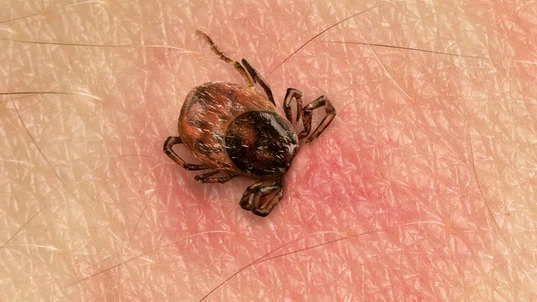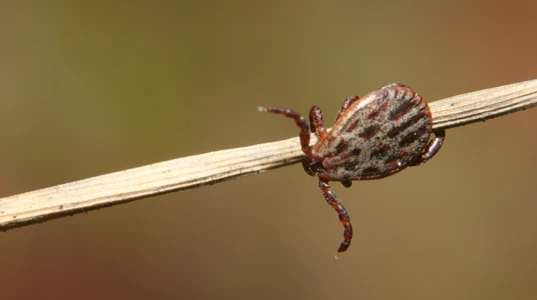How to Remove Ticks

Bites and Stings

Paralysis ticks can cause an allergic reaction, ranging from mild itching with localised swelling and pain to life-threatening anaphylaxis.
Paralysis ticks are not easily dismissed. They are a danger to any host they attach themselves to. Paralysis ticks usually inflict themselves on unsuspecting animals - native Australian species, mainly. However, they are also a sucker for any livestock, domestic pets, and humans that cross their path. As an estimated 20,000 domestic animals are paralysed every year from tick bites, tick prevention is a big deal in Australia. In fact, when pets succumb to a tick's toxins, their owners can pay as much as $5,000 for veterinary care. Tick prevention is just as important for humans as it is for animals, as many of us experience allergic reactions from ticks. Reactions range from mild itching and localised swelling to life-threatening anaphylaxis. Tick bites can also transmit infections like Lyme Disease, the symptoms for which can include fever, fatigue, and muscle and joint aches. Although paralysis ticks can be found all year round, the peak season is Spring and Summer, when warm weather combines with periods of rain. At these times, you should make sure tick checks and tick bite prevention are part of your routine whenever you're outdoors — gardening, bush-walking, camping, etc. Paralysis ticks are generally prevalent in moist, humid environments, such as grassy and wooded areas. They are especially common in wet forests and temperate rainforests and can often be found among trees, logs, leafy debris, and uncontrolled vegetation.Allergic Reactions
Allergic reaction is the most serious medical condition associated with ticks. This is also true for many other insect bites. These reactions can range from mild itching with localised swelling and pain, to severe and life-threatening anaphylaxis. Even without the tick being on a person for an extended length of time, a severe allergic reaction can still occur.
Paralysis Ticks
Tips to Avoid Paralysis Ticks
Other than avoiding the areas mentioned above, here are a few methods to stay out of harm's way:- Walk in the centre of trails and avoid walking through dense vegetation
- Tuck your pants into your socks and your shirt into your pants so ticks have less direct skin contact
- Wear light coloured clothing as ticks will be much easier to detect
- Wear insect repellent containing at least 20% DEET. It can protect you from ticks for several hours. Apply it to the skin before going into likely tick territory.
Daily Tick Check
In tick season, it's wise to check your body for ticks after being outdoors, including familiar environments, even in your own backyard. Ticks tend to bury themselves in the following areas of the body:- Under the arms
- In and around the ears
- Inside the belly button
- Back of the knees
- In and around the head and among body hair
- Between the legs
- Around the waist
How to Remove Ticks
Due to the risk of anaphylaxis, removal of ticks by force is no longer recommended by the Australian Resuscitation Council. The below steps are recommended, instead:- Follow DRSABCD and be prepared to perform CPR.
- If the casualty displays signs of anaphylaxis, follow the Australian Resuscitation Council's Anaphylaxis Guideline.
- Immediately kill the tick where it is using an ether-containing spray (for suitable products, refer to your pharmacist).
- Wait for the tick to drop off.
- If the casualty has a history of tick allergy, seek medical attention from a doctor to remove the dead tick.
- Move the casualty to a safe place.
- Apply a cold compress to help reduce pain and swelling.
- Monitor the casualty at all times. Be alert for signs of allergic reaction.
- Provide reassurance.
Originally published at
https://www.australiawidefirstaid.com.au/resources/how-to-remove-ticks
as part of the Australia Wide First Aid Articles Library









